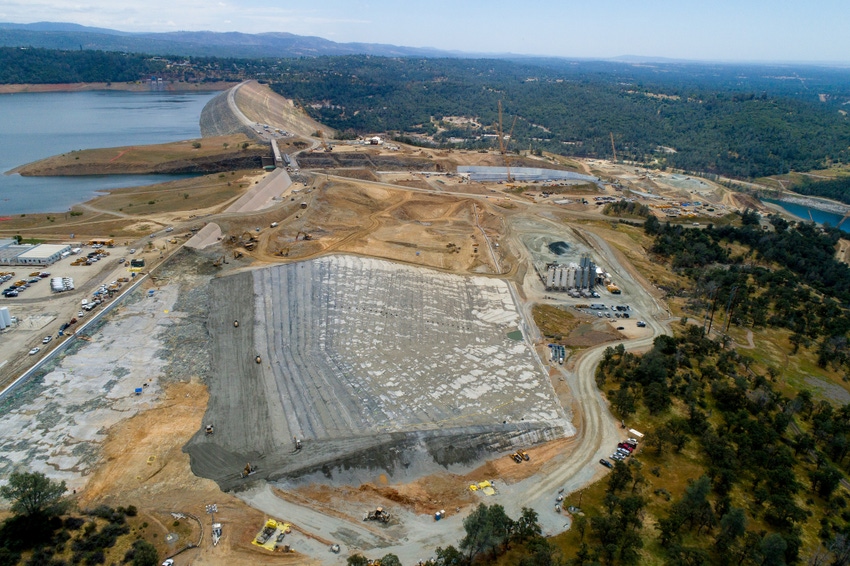
Reconstruction of the Oroville Dam’s main and emergency spillways is about 45 percent complete, but the project is still on track to be finished by the end of this year, state Department of Water Resources officials say.
While the earth-moving portion of the estimated $870 million project is mostly behind them, crews will race this summer to put all the finishing touches on the new concrete structure.
“Since we took control of the (main) spillway two weeks ago, the DWR and its contractors have been extremely active in what will be an incredibly busy year,” DWR project manager Tony Meyers told reporters in a May 23 conference call.
As they did last year, workers will aim to finish the main spillway by Nov. 1, says Jeff Peterson, the Omaha, Neb.-based Kiewit Infrastructure Co.’s project director. That’s 162 days from now, he noted in the call.
In the last few days, crews have been using controlled blasting to remove temporary walls on the main spillway so they can install permanent, structural concrete walls and chutes.
Workers have also begun resurfacing one of the structural concrete slabs that did not meet the DWR’s quality control standards on the main spillway last year. The slab has a “poor surface finish,” and the top layer is being taken away and replaced with structural concrete, Meyers says.
On the emergency spillway, crews are adding a concrete cap to secure a new underground cutoff wall and completing a concrete splashpad on the hillside below the spillway. The placement of reinforced concrete on the northern half of the splashpad is 78 percent complete.
While workers have a goal of finishing the main spillway by Nov. 1, the project as a whole is on track to be done by the end of December, Petersen says.
Storm clouds
The project comes as both literal and political storm clouds have hovered overhead. There were isolated showers and thunderstorms in the mountains of Northern California in the past week as a weak system moved through, but weather didn’t interfere with work on the dam, officials say.
Meanwhile, uncertainty remains about funding for the project as the Federal Emergency Management Agency told two California congressmen earlier this month that an independent panel’s unfavorable review of the DWR’s management of the dam may jeopardize some federal reimbursements.
DWR spokeswoman Erin Mellon has said the agency will continue to submit reimbursement requests to FEMA until it is told otherwise. The state wants FEMA to pick up 75 percent of the cost of the project, with the State Water Project contractors contributing the rest.
Lake Oroville is the chief reservoir for the State Water Project, whose contractors irrigate about 750,000 acres of Central Valley farmland and serve more than 26 million customers, according to the project’s website. The dam’s near-failure amid heavy storms in February, 2017, prompted the reconstruction project.
About the Author(s)
You May Also Like






